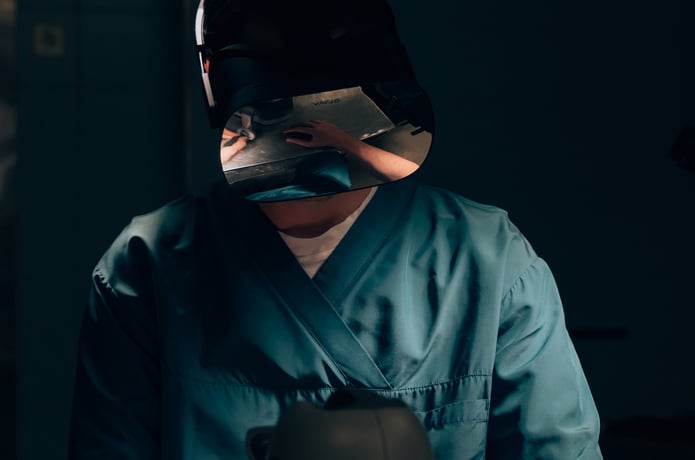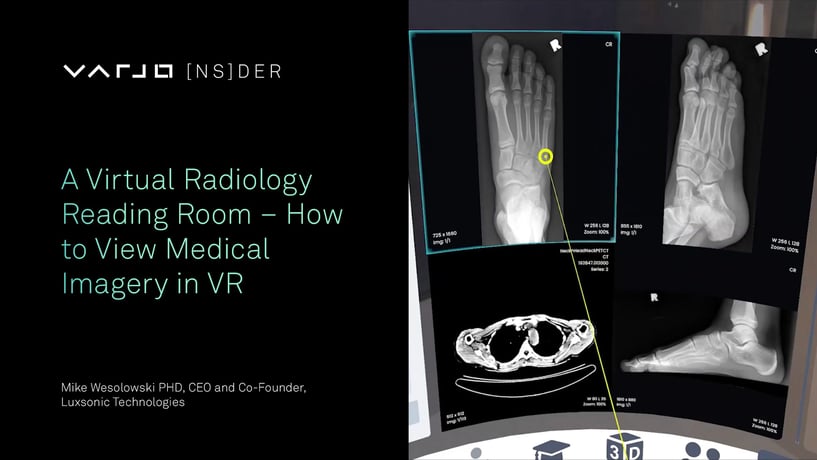
Varjo’s VR, AR and XR Help Tampere University Revolutionize Medical Imaging
Varjo is partnering with Tampere University to research ways to present medical imaging data with new 3D methods in VR, AR and XR.

Varjo’s human-eye resolution mixed and virtual reality headsets take medical professionals to a higher level of focus and emotional engagement.
With true-to-life XR/VR, medical and healthcare personnel can prepare for the most challenging real-life scenarios. Find out why top-tier medical professionals choose Varjo as their choice of technology to leverage in virtual reality in healthcare and healthcare training.

When precision matters
By combining the high-accuracy eye tracking data from Varjo headsets with other biometric data from a platform like iMotions, you can measure human behavior and cognitive load with unmatched precision and reliability. This accuracy gives you the most complete and full human insights available anywhere in the world.
Varjo products are fully compatible with an expanding collection of 3D platforms and software, including Unreal®, Unity®, iMotions, OramaVR, and OpenXR 1.0.

Our industry-leading dual 4Kx4K displays bring to life high-detail 3D visualizations with better contrast, better color accuracy and sharper image quality than ever before.
See displays, medical instruments, text and other elements in human-eye resolution – just like in real-life. It’s another level of realism that feels more natural and emotionally engaging.
Interact with physical tools and equipment using your hands and collaborating with real colleagues, all while being fully immersed in a photorealistic virtual environment.
Varjo XR-4 headsets make it possible to switch seamlessly between augmented reality, mixed reality and full virtual reality – combining the best of both worlds into one device.
Varjo's video pass-through mixed reality depth awareness combines the LiDAR depth sensor and camera feed to perfectly blend virtual and real elements – vastly improving the occlusion of tools, bodies and hands. In-box Varjo Controllers, powered by Razer, provide precise interactions with high tactile immersion in a fully interactive and natural way across XR/VR simulations.

With Varjo headsets, medical professionals can train and collaborate together in a shared immersive reality, improving ways of working, communication and readiness for any medical scenario.
Stay in the same room with the same team and then easily switch from one scenario to another.
Read case study“Immersive simulation training that replicates real-life scenarios is essential in helping prepare health care providers and students provide safe patient care.”
Ingrid Laerdal, Vice President of Patient Care at Laerdal
Read case study“The high-quality products and assistance that Varjo provides really meet both our, and our clients’ needs."
Benjamin Krynski - Founder and Director of Future Projects at Real Response
Read case study“The use of VR/XR is growing rapidly. It is going to be a tremendous part of the future of medical education."
Greg Spitzer, COO of Toltech

Unmatched features for synthetic training

Blog / January 27, 2020
Varjo is partnering with Tampere University to research ways to present medical imaging data with new 3D methods in VR, AR and XR.

Press Release / March 6, 2023
machineMD and Varjo's solution is the only device that will perform comprehensive eye exams with a VR eye tracker applicable in healthcare.

Medical Research / April 12, 2022
Learn about the innovative medical use case of using VR in radiology to create a virtual reading room to inspect medical imagery.
Ready to redefine reality?